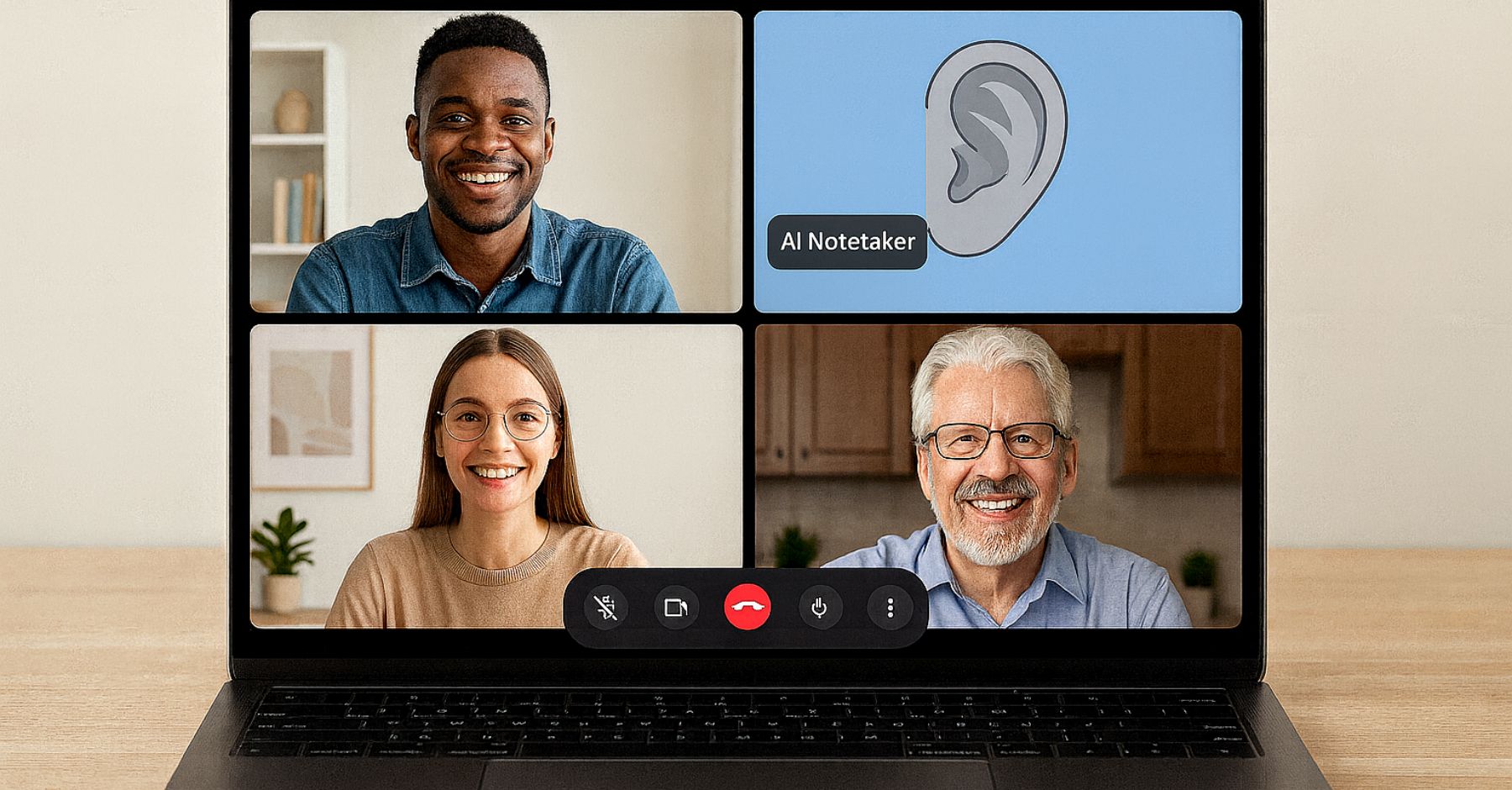Each week we’ll gather headlines and tips to keep you current with how generative AI affects PR and the world at large. If you have ideas on how to improve the newsletter, let us know!
What You Should Know
What to Know About AI Notetakers
By now, you’ve surely joined a video call where at least one meeting participant isn’t human. AI notetakers used to be standalone products like Otter and Granola, but recently have been integrated into meeting platforms like Google Meet, Zoom, and Microsoft Teams. They can certainly be handy to generate transcripts that inform content or summaries that call out action items for individuals on the call. They can also potentially lead to embarrassment.
An article published by the Wall Street Journal yesterday shared a few anecdotes, including people who didn’t intend for private conversations to be recorded, others who didn’t realize these AI-generated summaries were being emailed to all the meeting participants, and some who suggested an internal Slack channel to share humorous tidbits that notetakers pick up.
Sometimes the stakes are higher. One post went viral on social media last year in which a VC firm allegedly sent an entrepreneur a transcript “including hours of their private conversations afterward, where they discussed intimate, confidential details about their business.” That person told the Washington Post he squashed the deal even though the investor “apologized profusely.”
These notetakers won’t be going away anytime soon, so everyone needs to know how to use them and interact with them.
If you’re running a meeting and in control of a notetaker, be sure to carefully review the tool’s settings because you probably don’t want it to join every meeting or send a transcript to every meeting participant.
If you’re joining someone else’s call, be extra aware — sometimes it’s obvious that there’s a notetaker listening to the conversation, but other times it might be part of the “recording in progress” notification. If you’re worried about sharing sensitive information, ask the meeting organizer if the conversation is being recorded and who that conversation might be shared with.
Elsewhere …
- PODCAST: How Manufacturers Can Overcome Internal Barriers to AI Adoption
- Tim Cook Says Apple ‘Must’ Figure Out AI and ‘Will Make the Investment to Do It’
- AI Is Designing Proteins that Could Help Treat Cancer
- ChatGPT Is Set to Reach 700 Million Weekly Users This Week
- A Hiker Was Missing for Nearly a Year. Then an AI System Spotted His Helmet
- Google Agrees to Curb Power Use for AI Data Centers to Ease Strain on US Grid When Demand Surges
- Wizards, Not Workers, Win AI’s Talent Lottery
 Less instruction, more examples
Less instruction, more examples
What’s happening: In a blog post last week, Wharton Professor Ethan Mollick explained how OpenAI’s new ChatGPT Agent “is not trained on the process of doing work; instead, OpenAI used reinforcement learning to train [its] AI on the actual final outcomes.”
Therefore, he suggests, it’s not that important to tell the agent about your workflow as long as you’re sharing what you want the final result to look like. This strategy can be successful outside of agentic AI, too.
However…: It works best on repeat work, like a new hire press release or a blog post promoting different sessions of the same conference. The key is having previous examples to share so your AI tool of choice understands the structure, tone, style, and objective you want to achieve with your new request.
Try this: Instead of prompting AI with a process of how you’d want to create a piece of content, explain what you want the piece to be and share examples that will help guide it. (I always include “DO NOT BEGIN DRAFTING UNTIL I SAY SO” so it doesn’t jump the gun.) Once it has digested the examples, share the new information that will inform the piece you’re working on. After you think it has enough context (I also ask “What questions do you have?” just in case I didn’t offer enough), you can ask it to start writing and should get something close to a workable first draft.
Quote of the Week
“Starting today, you’ll see gentle reminders during long sessions to encourage breaks. We’ll keep tuning when and how they show up so they feel natural and helpful.”
— OpenAI, in a blog post published Monday about how it is optimizing ChatGPT
How Was This Newsletter?



